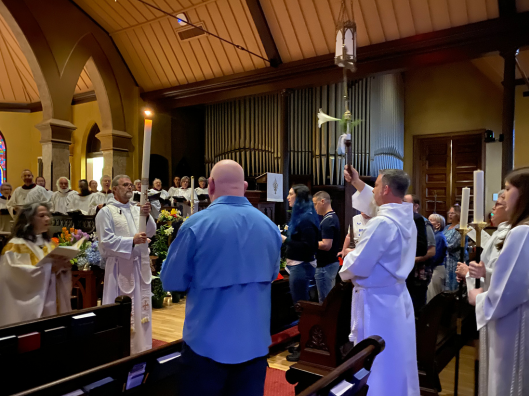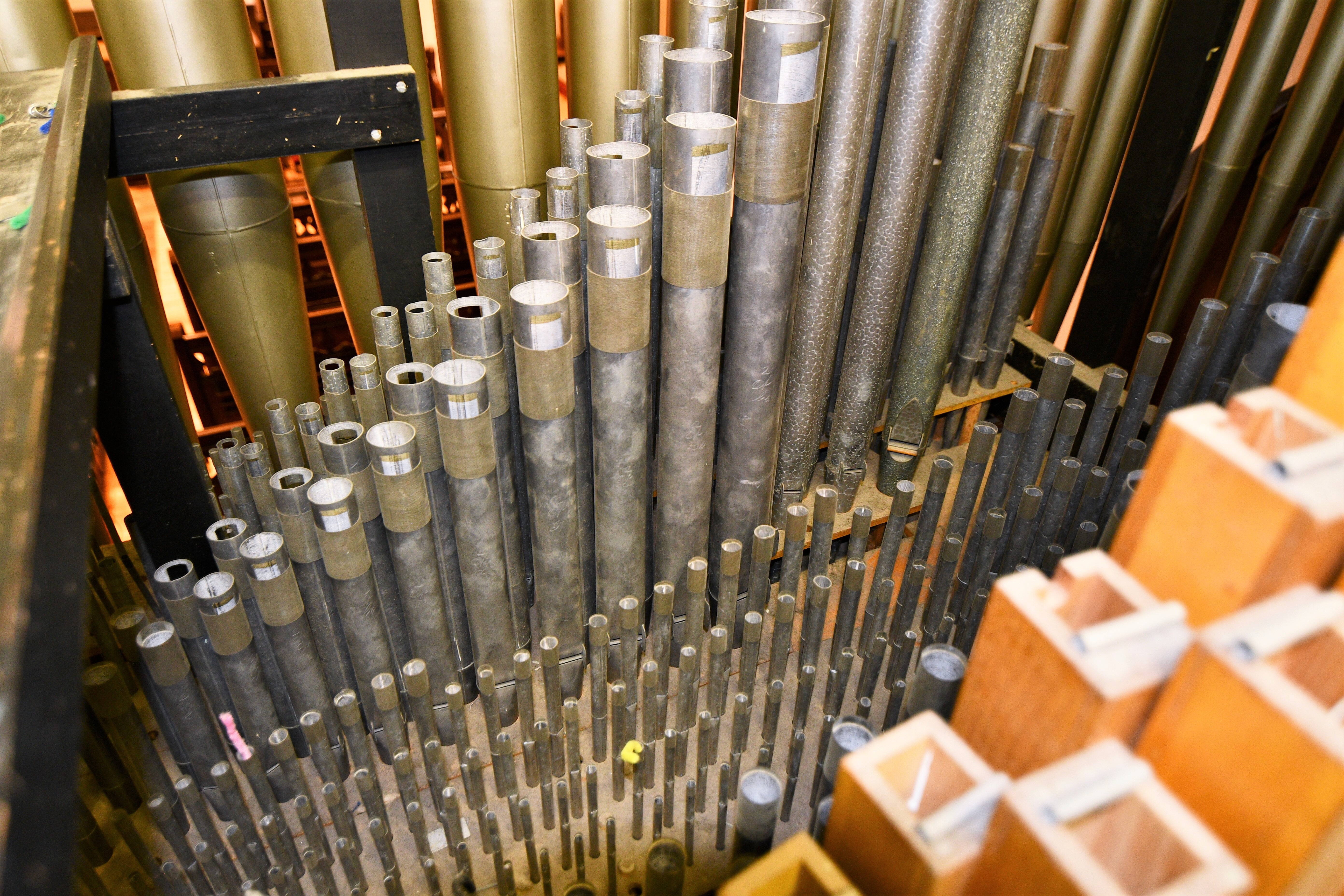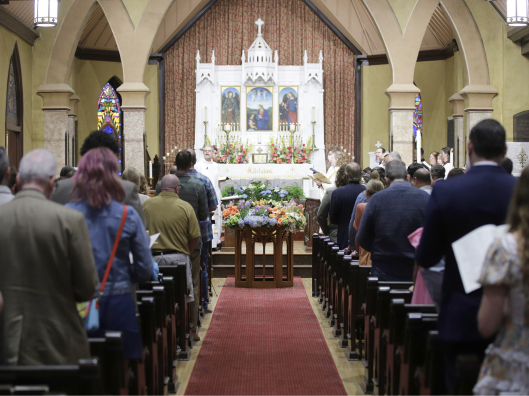
HOLY SATURDAY – APRIL 19
7:30 PM – The Great Vigil of Easter Holy Eucharist with Baptism livestreamed
With the proclamation of Easter at the Great Vigil, all are invited to the Feast of Milk and Honey in Sumners Hall to celebrate Christ's resurrection and enjoy sweet treats!
The Great Vigil of Easter features psalms and canticles linked to the Vigil lessons, and hymns chosen to highlight the specific themes of this first Eucharist of Easter.
The liturgy begins with the lighting of a new fire, from which a new Paschal Candle is lit. This is followed by the Easter Proclamation, known by its Latin incipit, ‘Exultet’, sung to an elaborate chant. The Exultet consists of a proclamation of good news to heaven and earth, and to the Church universal and local; a consecratory preface like that of the Eucharistic Prayer, which lists reasons for keeping, and effects of, this great feast; and a blessing of the Paschal Candle.
The Lessons of the Vigil itself tell the great story of God’s creation and salvation of the world in both narrative and prophetic form: the great stories and poems of our faith, recited as it were around the sacred fire. The Prayer Book pairs each with a psalm or canticle dealing with similar themes or symbols: Psalm 136, a creation Psalm, follows Genesis 1; the Song of Moses follows the account of the Crossing of the Red Sea; and so on.
The ministration of Holy Baptism does not call for music per se, though like practically all liturgical texts, the Thanksgiving over the Water, Prayers for the Candidates, and certain biddings may be chanted. The Eucharist, however, is awash with music, starting with the singing of Gloria in excelsis after its Lenten hiatus. In this parish we sing this in a metrical version by Bland Tucker, ‘All glory be to God on high’ [421], set to Nicolaus Decius’s tune for his own adaptation of the Gloria, ‘Allein Gott in der Höh sei Ehr’, which tune was cleverly derived from part of the tenth-century melody for the Gloria traditionally appointed for Eastertide (indeed ‘Allein Gott’ was first sung on Easter Day in 1523). This hymn forms the basis of the organ postlude by Georg Böhm.
Our Offertory hymn, ‘Lord, enthroned in heavenly splendor’ [307], is appointed as a Communion hymn in the Hymnal, but it (particularly stanzas 1, 4, and 5) is especially suitable for the Easter Vigil Mass: Our Lord is ‘first-begotten from the dead’; the ‘Paschal Lamb’ whose self-offering is couched in terms closely related to traditional Prayer Book language; ‘Life-imparting heavnely Manna, smitten Rock with streaming side... risen, ascended, glorified’. The strong Welsh tune, ‘Bryn Calfaria’ (‘Calvary’s Hill’), to which the text is set requires garlands of Alleluias and suggests something of the weight of what Our Lord bore and wrought upon the Cross.
A sixteenth-century German hymn, ‘Erschienen ist der herrlich Tag’, with its proper tune, forms the basis of our Communion anthem and the organ prelude to it. Both the richly evocative text and the lively tune (inspired by an Easter chant) were written by Nicolaus Herrmann and published in 1560. Of the fourteen original stanzas I selected and translated seven, focusing on Christ as conquering hero and Passover Lamb (reluctantly omitting several vivid but perhaps slightly obscure other symbols, as well as the scenes of the women at the tomb and the Road to Emmaus account), and set the tune for three-part choir. See Hymn 201 for the tune and a translation of a different part of the original.
Our Commuion hymn, ‘Come, ye faithful, raise the strain’ [200], was written in the eighth century by Yuhanna ibn Mansur ibn Sarjun_, a Syrian Orthodox Christian monk and priest better known to us as St John of Damascus. This hugely important figure made important contributions in law, theology, philosophy, and music; writing in Greek, he expounded the Christian faith, combated heterodoxy, and strongly defended the veneration of icons when the practice was under attack by the Roman (Byzantine) Emperor. He composed hymns which are still used liturgically in Eastern Christian practice throughout the world; three translations by John Mason Neale of parts of St John’s hymns appear in the Hymnal, including this selection from his first Ode for Low Sunday. We sing it at the Vigil on account of its inclusion of Exodus themes as well as the reference to the empty tomb; the lively sixteenth-century tune to which the Hymnal sets it highlights the joy of the hymn and the feast.
We conclude with ‘At the Lamb’s high feast we sing’ [174], a translation of the Latin Eastertide Office hymn ‘Ad regias agni dapes’. Once again the sacrifice of the Passover Lamb, the crossing of the Red Sea, and the provision of manna appear, all explicitly connected both to Christ’s physical Body and Blood and to the two dominical Sacraments of Holy Baptism and Holy Eucharist. The familiarity of the tune (which we often sing at the beginning and end of the Season after the Epiphany with the text ‘Songs of thankfulness and praise’ [135]) unfortunately runs the risk of blinding us to the power of this fine Easter hymn.



Login To Leave Comment